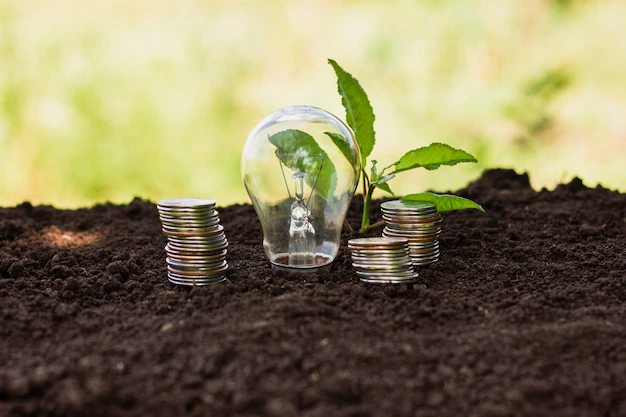Renewable Energy Projects Driving Economic Growth in Southeast Asia

Hello there, energy enthusiasts! If you’ve been keeping an eye on global economic shifts lately, you’d have noticed something electric happening in Southeast Asia. Renewable energy is not just about saving the planet anymore. It’s becoming a major economic driver, especially in this vibrant region. Let’s dive into how green energy initiatives are turbocharging Southeast Asia’s growth.
The Southeast Asian Energy Landscape: An In-depth Glance
The lush terrains of Southeast Asia, with its mega-cities and serene islands, have an ever-increasing energy appetite. Historically, coal and oil were the staples, but recently, there’s a green revolution underway.
To paint a clearer picture, IRENA stats revealed a commendable jump in the region’s renewable energy capacity – from 14.8 GW in 2010 to an impressive 50.5 GW in 2020. This isn’t a mere incremental growth but a dynamic transformation.
Why the Massive Tilt Towards Renewables?
Economic Opportunities in Abundance!
Beyond the obvious ecological benefits, renewables are emerging as economic powerhouses. They’re not merely energy sources; they’re catalysts for a broad spectrum of economic activities.
Vietnam’s journey is particularly illustrative. Their ambitious push into the solar sector didn’t just satiate their energy needs. It unlocked a plethora of ancillary economic benefits. As per the World Bank, the country’s solar foray was instrumental in creating close to 100,000 jobs in 2019. But it’s not just about employment. There’s a ripple effect. Local communities are benefiting from the associated infrastructure development. New roads, schools, and hospitals are cropping up around these renewable hubs. The supply chain, from manufacturing to maintenance, has also expanded, paving the way for small businesses to thrive.
Furthermore, embracing renewables has positioned countries like Vietnam as attractive destinations for foreign investments. International corporations, keen to greenify their operations and portfolios, are looking at these nations as potential partners for a brighter, sustainable future.
Sustainable Tourism: The Emerging Jewel
Southeast Asia, renowned for its pristine beaches and lush rainforests, is also experiencing a transformation in its tourism narrative. The focus isn’t just on showcasing natural beauty; it’s about ensuring this beauty remains untarnished for generations to come.
Take the Philippines’ Palawan Island as a case in point. Their strategic transition to renewable microgrids isn’t merely a logistical decision. It’s a potent brand statement. By offering uninterrupted, green power, they’re crafting an irresistible proposition for the discerning, eco-conscious traveler.
But there’s more. As destinations like Palawan adopt sustainable practices, they’re also amplifying their commitment to conservation. Renewable installations often come with educational centers, offering tourists a peek into the world of green energy. Plus, eco-resorts, harnessing solar or wind power, are popping up, providing travelers with a unique blend of luxury and sustainability. This holistic eco-tourism approach isn’t just good for the planet; it’s proving to be a lucrative niche, appealing to a growing segment of travelers who prioritize sustainability as much as relaxation.
Attracting International Investments: The Green Dollar
With the world’s eyes on climate change, international investors are on the lookout for sustainable ventures. Southeast Asian nations have recognized this goldmine. By amplifying their green credentials, they’re attracting big bucks from all around.
In 2019, ASEAN countries drew in around $3 billion in renewable energy investments, per the International Energy Agency. That’s a lot of green for going green!
Innovation & Technology: The Wind Beneath Their Wings
It’s not just about harnessing energy from the sun, wind, or water. It’s also about innovating and adapting technologies to fit local needs. Southeast Asian companies are increasingly at the forefront of such innovations.
A classic example is Thailand’s ‘floating solar farms’. By utilizing their numerous hydropower reservoirs, they’re innovating in space utilization, preventing evaporation, and generating power – all in one go!
Infrastructure & Connectivity: Building the Green Highways
The metamorphosis from fossil fuels to renewables isn’t just a switch in power sources. It involves laying down a vast network of ‘green highways’ that ensures efficient energy transport and consumption.
Indonesia, an archipelago with over 17,000 islands, provides a fitting example. The challenge of connecting remote areas is immense. However, the introduction of decentralized renewable energy systems, particularly in places like Sulawesi and Papua, has been a game-changer. Small solar and hydro installations are bridging the energy gap, ensuring even the most isolated communities aren’t left in the dark.
Green Education & Training: Crafting the Future
The renewables sector doesn’t just need hardware; it requires skilled personnel. Recognizing this, nations are investing heavily in green education and training.
Singapore, the region’s tech and finance hub, is leading the way. Institutes like the Sustainable Energy Association of Singapore (SEAS) offer courses molding the next generation of green tech innovators and leaders. By equipping its populace with the right knowledge and skills, Southeast Asia ensures the longevity of its renewable push.
Policy Frameworks: Steering the Green Ship
For any substantial change, governance is key. The ASEAN nations understand this and have been meticulously drafting and implementing policies to facilitate their green ambitions.
Malaysia’s National Renewable Energy Policy and Action Plan, launched in 2011, sets clear renewable energy targets, ensuring the country remains on course. Thailand’s Power Development Plan (PDP) is another exemplary blueprint, focusing on increasing the renewable energy share in the national grid.
Grassroots Movements: Power to the People
While top-down initiatives are crucial, grassroots movements in Southeast Asia play a pivotal role. Communities, NGOs, and local enterprises are joining hands to bring about a change from the ground up.
In Myanmar, the Green Lotus NGO is making waves, promoting sustainable development and actively involving local communities in renewable projects. Their approach emphasizes that the true power of renewables lies in its democratization – energy for the people, by the people.
The Challenges Ahead
Of course, it’s not all sunny days. Transitioning to renewables presents challenges. Infrastructure demands, initial high costs, and the phasing out of fossil fuel industries are major hurdles.
However, the long-term benefits — a sustainable power source, boosted job markets, and a healthier environment — seem to outweigh the initial hiccups. With international support and regional cooperation, these challenges can be converted into opportunities.
The Bright Horizon
The nexus between renewable energy and economic growth in Southeast Asia is hard to ignore. It’s not just a theoretical concept scribbled in economic textbooks. It’s real, tangible, and happening right now.
So, the next time you read about a new wind farm in Indonesia, a solar project in Malaysia, or tidal energy exploration in Myanmar, remember: it’s not just about energy. It’s about driving an entire region forward, sustainably and economically.
To my energy aficionados and eco-warriors, let’s continue to champion and support these initiatives. After all, a greener planet is not just our responsibility; it’s also smart economics!
For more such articles, visit our articles section here – https://bbmagz.com/category/featured







